Palos Verdes landslide keeps getting worse. Residents’ anger boils
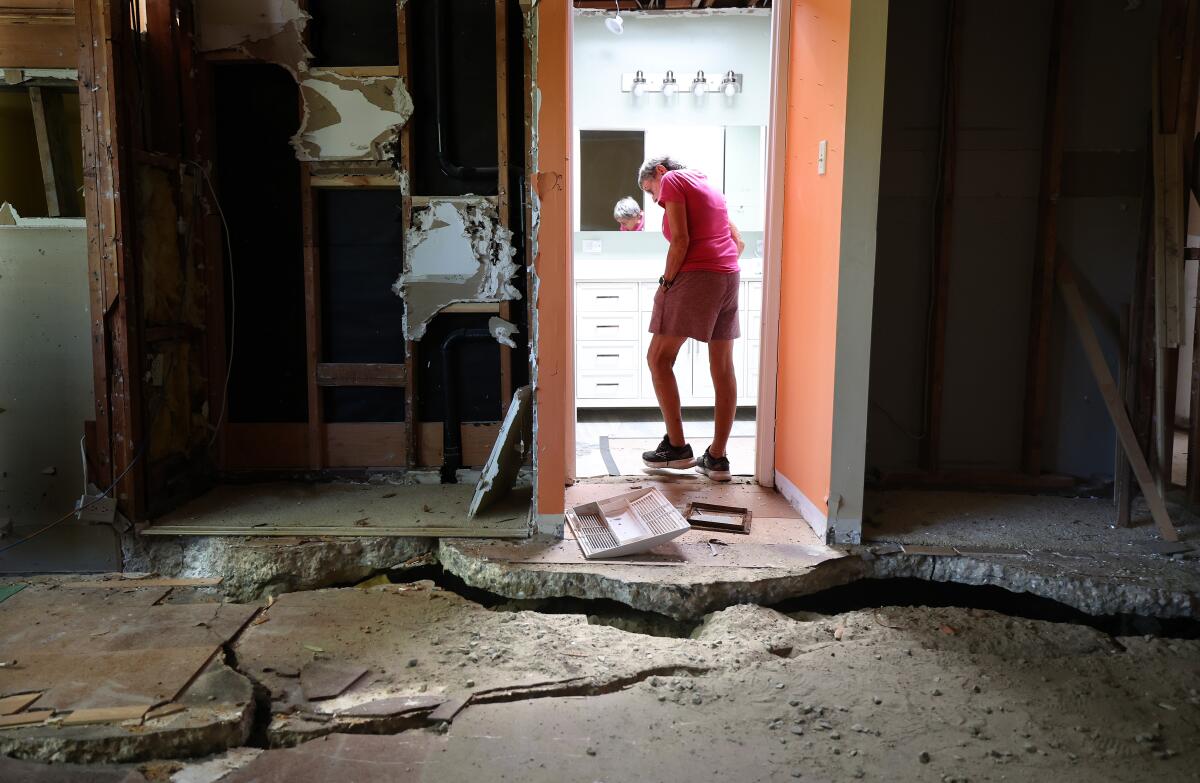
- Share via
Tom Keefer can only describe the last few weeks in their Rancho Palos Verdes neighborhood as a nightmare.
Cut off from vital utilities for more than a month while living on the active landslide whose limits have yet to be determined, Keefer and his wife have seen their lives upended by the escalating emergency in ways they never could have foreseen.
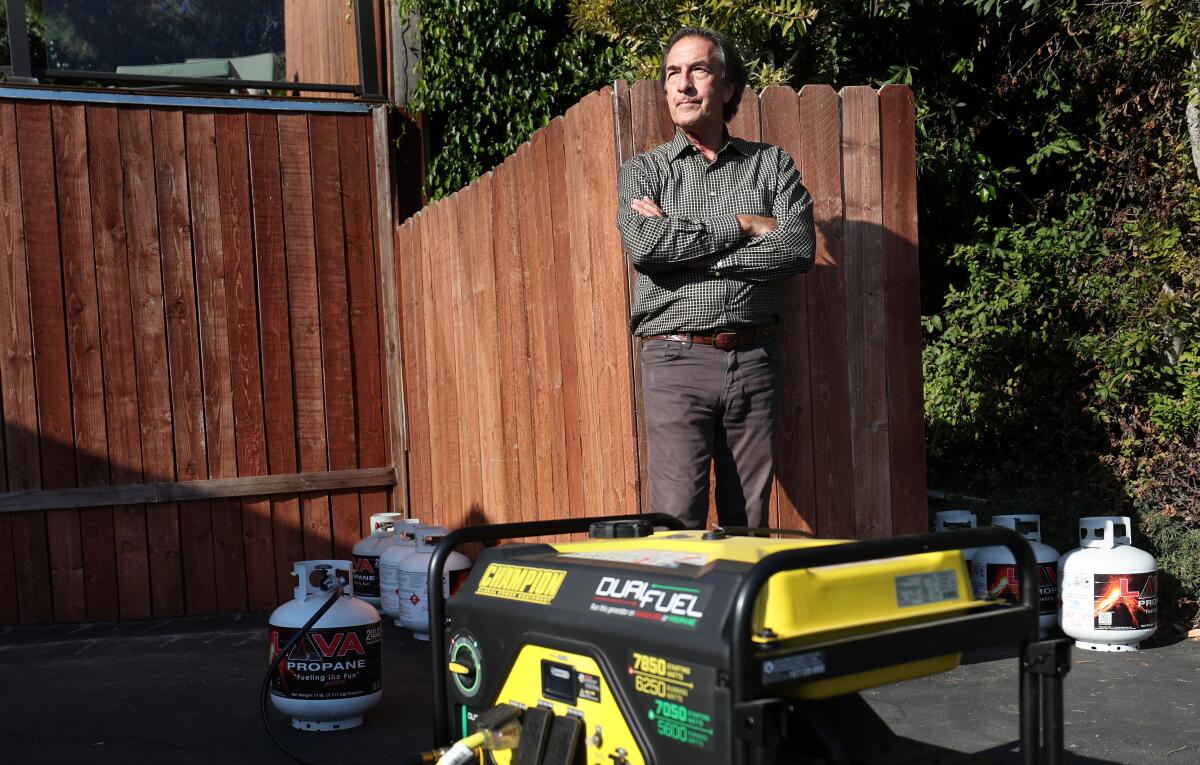
Beyond the closed roads, damaged homes and transformed landscapes caused by the devastating and ongoing land movement, they have found themselves struggling to safely store food and secure stable power while running repeatedly to the gas station for more ice and propane to keep their house, and lives, afloat.
“We have scrambled,” Keefer, 67, said. “Not only is it stressful emotionally, but it’s stressful financially.”
Amid the long list of challenges now accompanying daily life in their Portuguese Bend community, the predominant feelings among many residents are mounting anxiety and frustration — and even anger — over a lack of responsibility, answers or assistance from anyone in charge.
“The sad thing is there’s been literally no help, it’s been extraordinary,” Keefer said. “There’s been no funding.… It’s only through helping each other that we’re making progress.”
The emergency has only escalated since the Keefers and their neighbors first lost natural gas in late July. Further gas and then electricity shutoffs have cascaded across four neighborhoods in two cities on the Palos Verdes Peninsula, with almost 300 homes now without electricity and 224 without gas — indefinitely. Many are without both.
Utility companies have said the ongoing land movement has made it unsafe to continue providing gas and electricity in certain areas, citing concerns about infrastructure breaks, potential wildfires and other hazards that may come with system failures.
On top of losing utilities, residents of 146 homes in the Portuguese Bend neighborhood — including Keefer and his wife — lost their landline internet connections when Cox Communications disconnected its service this month.
“It’s scary because it’s bigger than anything anyone imagined,” said Sallie Reeves, who has been trying to figure out how to safely remain on her Portuguese Bend property despite the lack of utilities — not to mention the massive fissure that runs through her home of more than 40 years. Before this winter, she and her husband had never seen any landslide damage on their property.
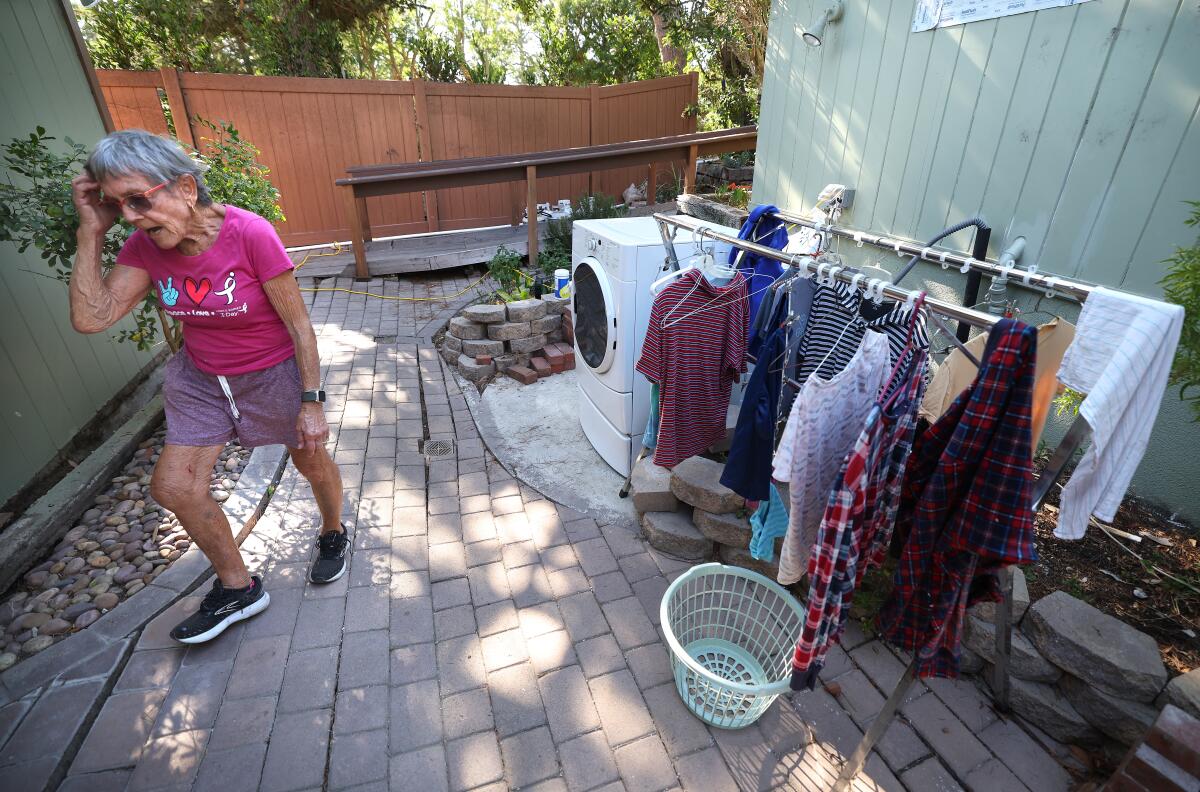
Reeves, 81, wouldn’t wish her scenario on anyone, but she is hopeful that with more people than ever affected, it could bring more attention and action to help save their beautiful corner of Los Angeles County as it continues to slide toward the ocean.
Yet months into the burgeoning crisis, it’s still not clear from where that help would come. Also not yet clear is the full reach and capability of this complicated complex of landslides, which officials last month determined was deeper and probably larger than previously thought, perhaps explaining the unprecedented movement across areas that had never before recorded shifts.
Gov. Gavin Newsom declared a state of emergency for Rancho Palos Verdes this month after the shutoffs, but that did not provide any relief to homeowners or money to combat the underlying geological forces that continue to drive further damage. Nor does it extend to the city of Rolling Hills, where 50 homes lost power and dozens of others lost gas last week because of land movement in its hillside neighborhoods, which were not previously considered vulnerable to the recent landsliding.
The state declaration should, however, help cover costs the city of Rancho Palos Verdes incurs because of the power shutoffs, including the generators and fuel used to keep the sewer system running.
The utility companies have not offered any specific plans for bringing back service. Instead, they’ve said that more shutoffs are possible — albeit as a last resort — with a SoCal Edison spokesperson calling it a “fluid situation.”
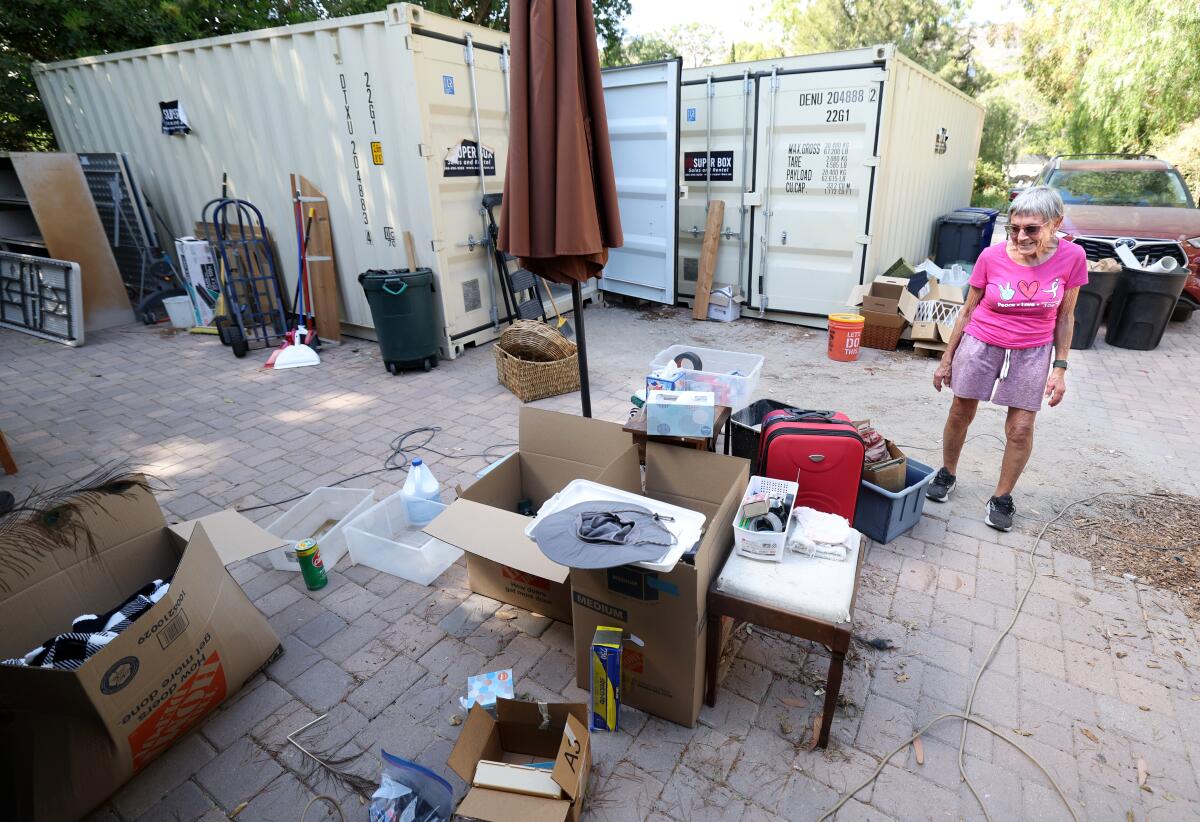
Rancho Palos Verdes officials are hoping to slow the land movement with the help of five new de-watering wells they’re in the process of installing at the deepest level yet. The wells aim to relieve the pressure from groundwater on the newly discovered, deeper slip plane, or the surface driving the landslide failure.
City officials have acknowledged, however, that they don’t know how effective the pilot project will be.
Rolling Hills officials, meanwhile, have been scrambling to respond to the crisis while also attempting to distinguish the city’s “notably different” land movement from the experience in Rancho Palos Verdes. Nevertheless, city officials reported this month that land movement had damaged three homes and a door at the local Los Angeles County fire station and caused several fissures and water main breaks — and they are now faced with utility shutoffs.
“Along with all of my neighbors, my family is struggling to deal with the serious consequences the actions ordered by SoCalGas and [Edison] have caused us,” Rolling Hills Mayor Leah Mirsch said in a statement. “It is devastating on many levels for all of us.”
Mirsch said the city had pursued all practical courses of action to prevent or delay these shutoffs, to no avail. She said the city is now committed to holding the utility companies accountable and “pushing them to implement solutions that will restore services both quickly and safely.”
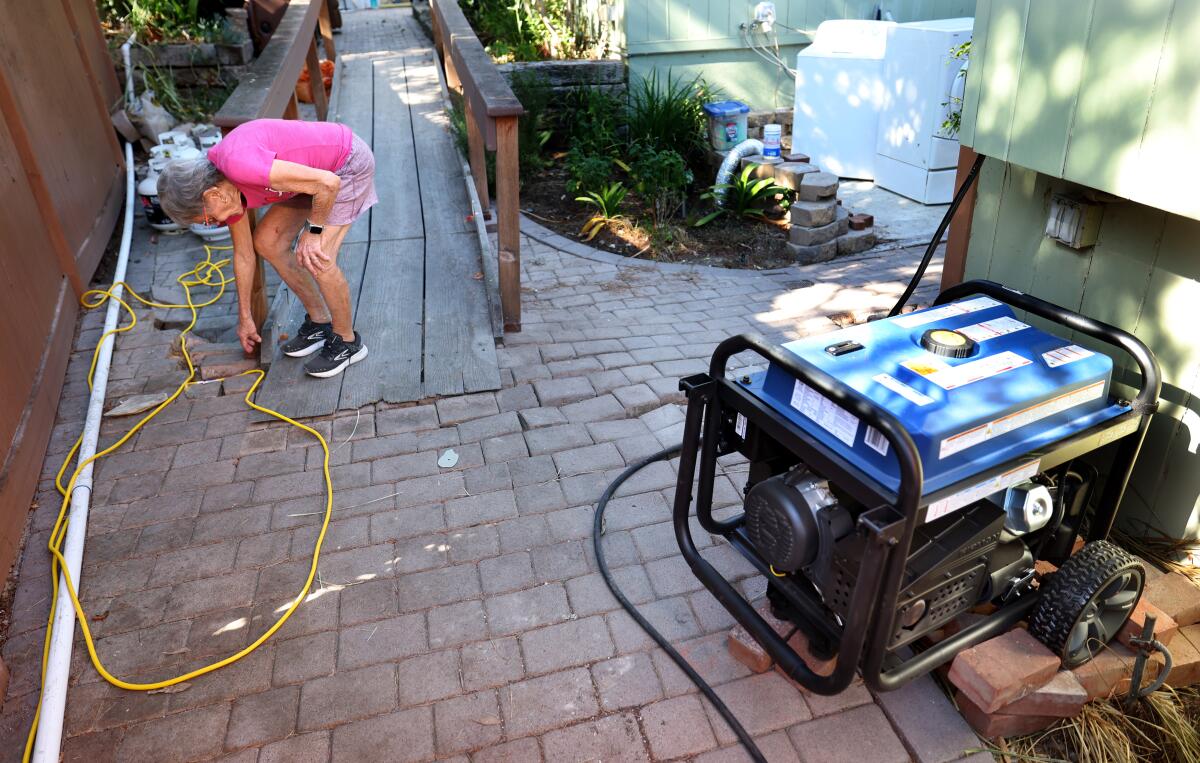
All the unknowns have left many in the area living on edge. For Steven Barker it’s been literal: His home in Rancho Palos Verdes’ Seaview neighborhood sits on the brink of a growing sinkhole. He has lost gas service but not electricity — yet.
“This has turned our world upside down, to say the least. We’re just trying to get by,” Barker, 52, said. “We’re trying to figure out what to do.”
He worries about losing electricity — something he’s been told could happen at any point — but he’s mostly concerned about the effects that rain could have on the sinkhole that has shot ripples through his street and is pulling on one side of his house.
“We are gonna be in big trouble if water flows into that thing right there,” Barker said, shaking his head at the massive cracks that span the street in front of his house. “Is it going to keep on going? We don’t know.”
Barker has asked the city and public works officials for months to address the sinkhole, but “no one’s helping us,” he said. “The governor, he hasn’t even seen [the landslide damage]. … He should be here, this is way bigger than RPV can handle. Way bigger than the utility companies. .... We need help from much higher [levels], state, federal — we need Army Corps of Engineers.”
His fear about upcoming rainstorms is echoed across the communities that have been fighting the land movement for months. It’s undisputed that the landslide activity is caused by increasing groundwater, which officials have linked to the back-to-back years of heavy rainfall in Southern California. Many residents also worry it’s been exacerbated by poor drainage and repeated water main breaks.
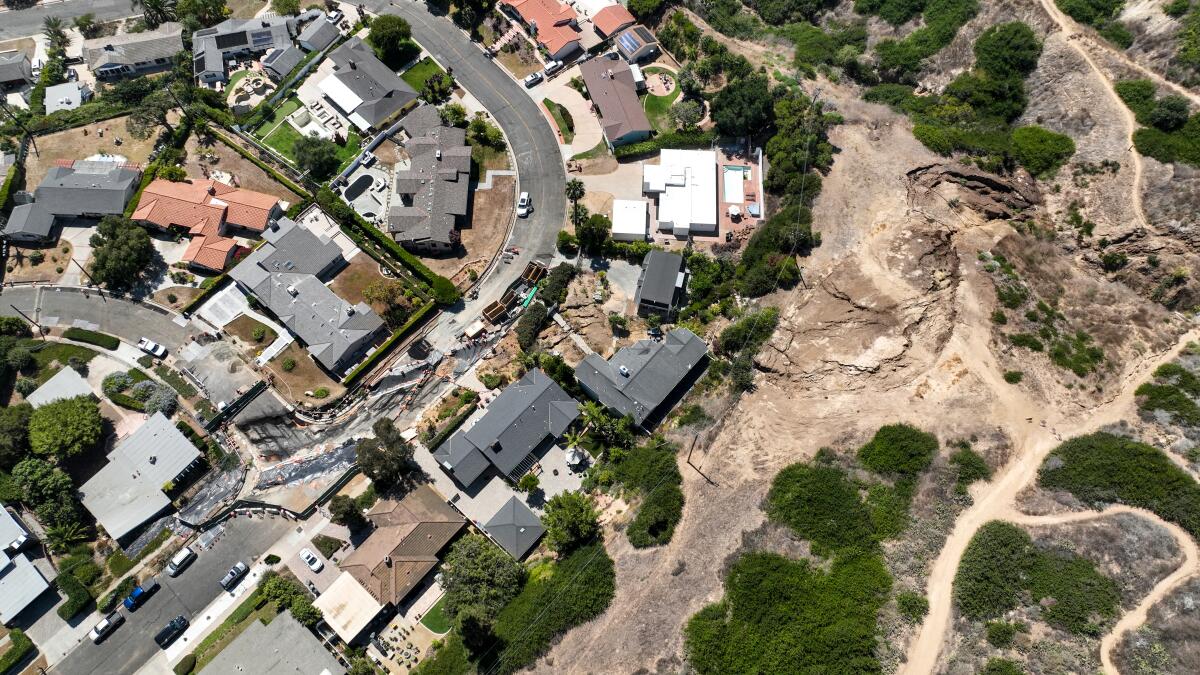
“Do you know how scared everybody is for the first rain?” Keefer’s wife, Cindy, 63, said. “Nothing is being done to prevent a major catastrophe. ... We don’t want sympathy, we want work being done up there — now.”
She said they feel abandoned, left behind to figure out a way to stop the landslide and survive off grid without help from experts, engineers or officials. She’s turned much of her energy to a community-run art auction, which aims to raise money to respond to the growing emergency and save their beloved homes.
Jan Seal, who lives in a Rancho Palos Verdes neighborhood above the Portuguese Bend Reserve, said she and her husband have been closely following the landslide developments and are glad they don’t live on one of the many cliffs overlooking the slide area, though they’re not too far.
“When you hear it happening in areas that didn’t have an issue, and they say this is moving faster than it ever has in the past … I think people always get nervous,” she said.
For Barker and his family, it’s been weeks of taking cold showers, eating takeout and Crock-Pot meals and grappling with the impossible math of which investments — installing a large propane tank, converting gas-powered appliances, switching to solar panels — are feasible or even possible for a house on the edge of disaster.
“If I lose my house … I don’t have the money to buy another,” Barker said. “Are they just gonna let the neighborhoods go and let people go homeless?”
More to Read
Sign up for Essential California
The most important California stories and recommendations in your inbox every morning.
You may occasionally receive promotional content from the Los Angeles Times.












